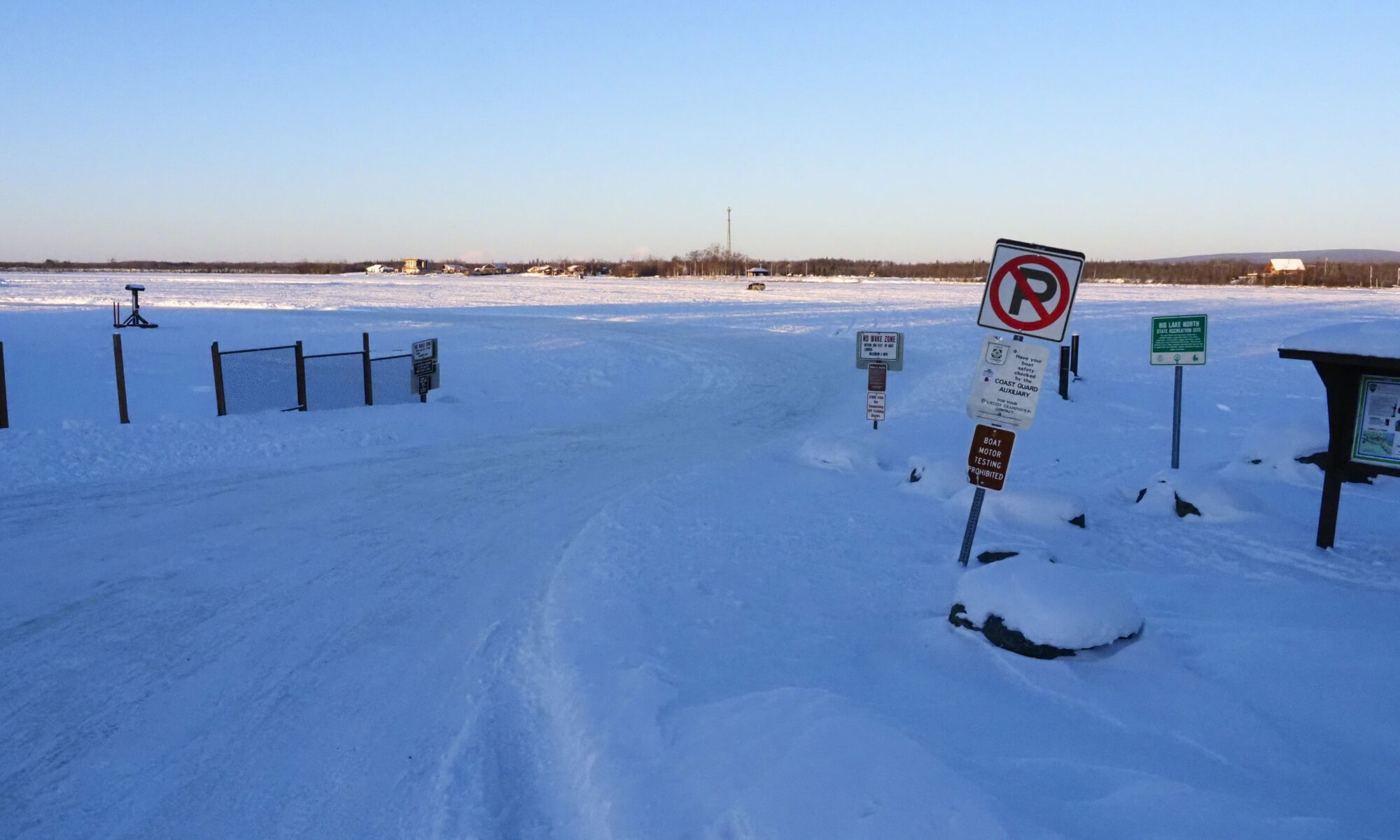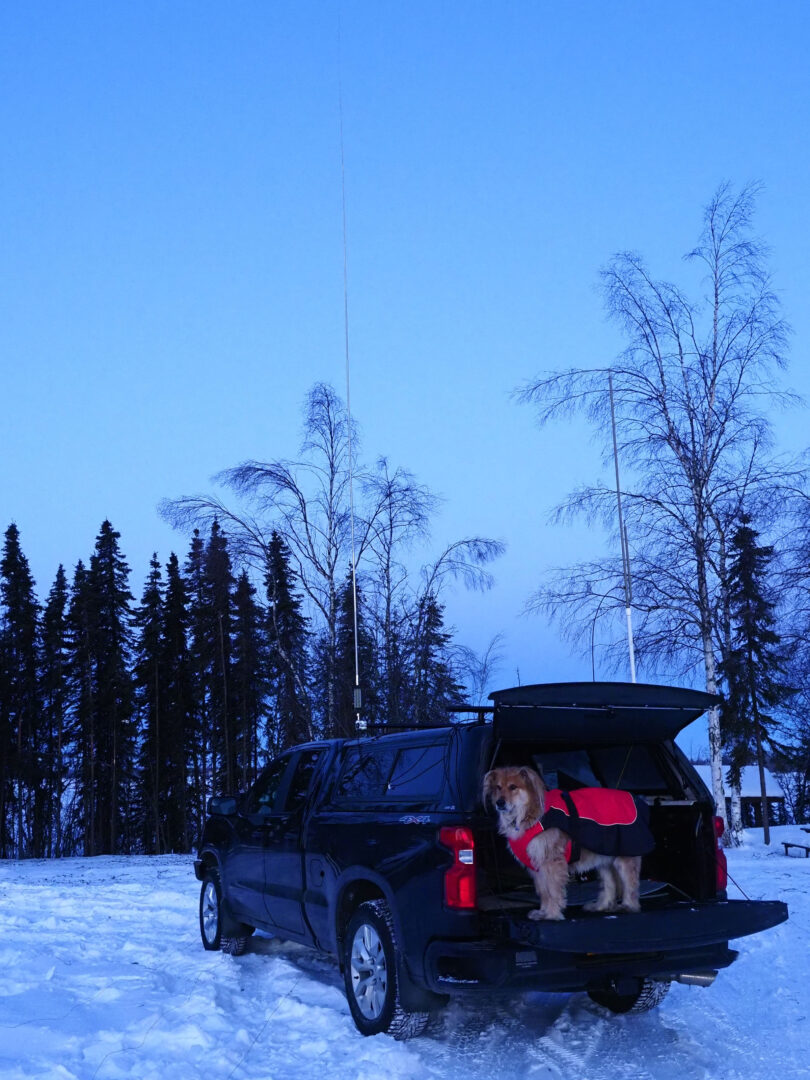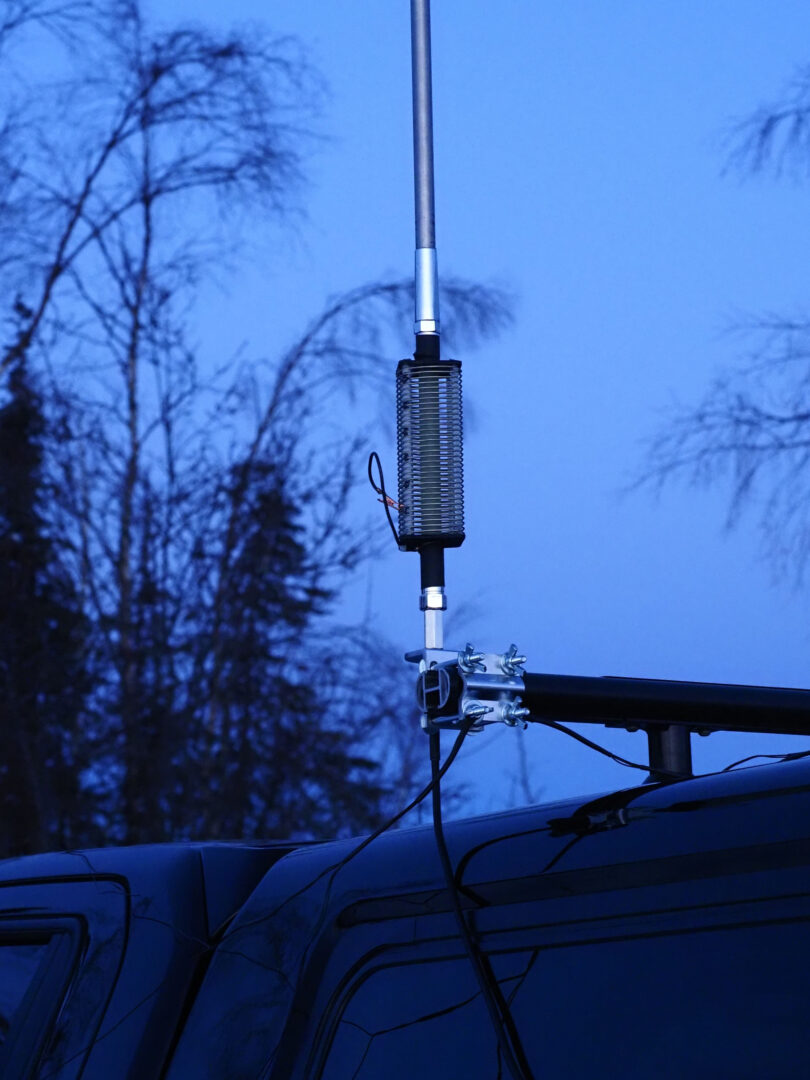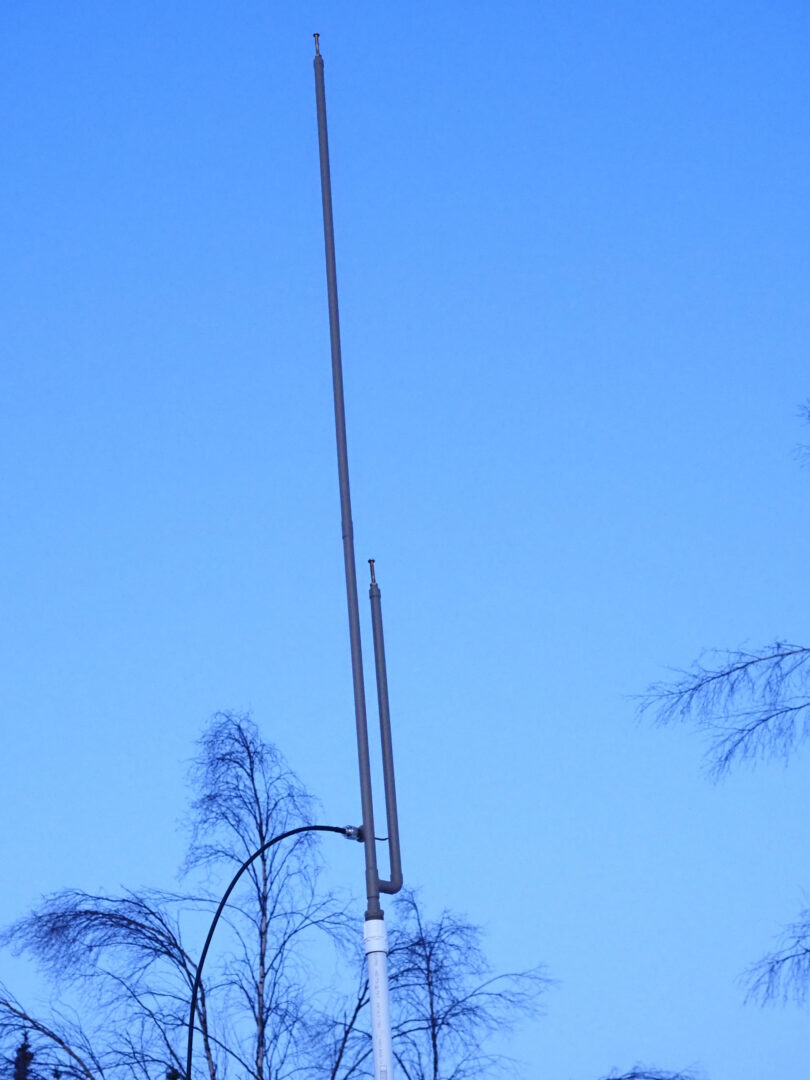Activated: 2022-01-02
This was the second of two activations planned for the long new year’s weekend. While the previous day had been successful, I learned two very important lessons:
In the Alaskan winter you can get an early start if you want, but that doesn’t mean the bands will be open.
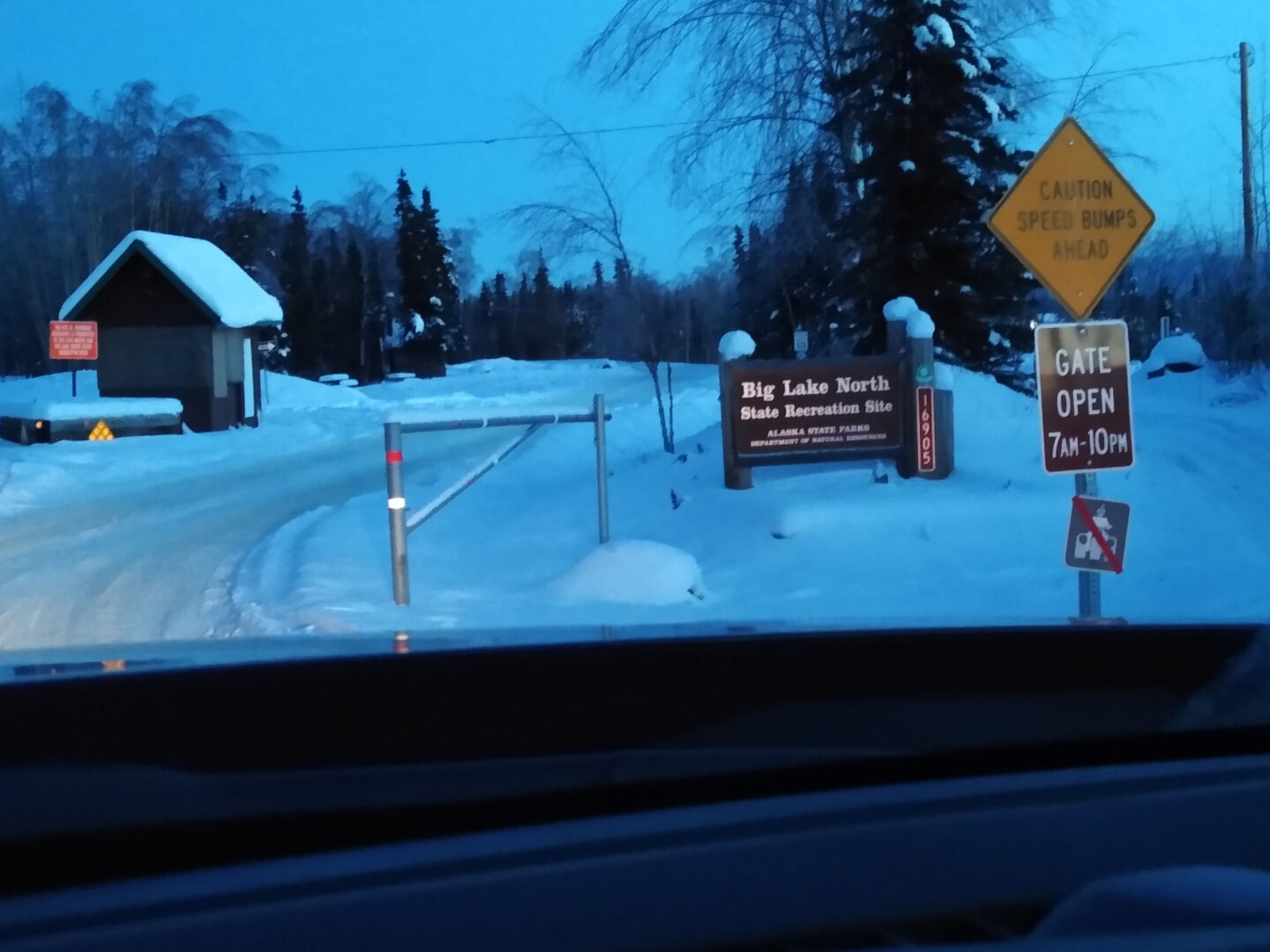
Being able to work local VHF-UHF contacts can save your bacon if the HF bands are not cooperating.
I planned the start of the activation to be just a little earlier than when I got my first HF contacts on the previous day, assuming that the band conditions would be similar (spaceweather.com predicted more of the same ionospheric conditions).
I was also bringing the full HF-VHF-UHF kit from the previous day:
- MFJ telescoping vertical antenna with 20 meter ground wires
- Homemade copper J-pole antenna
- Yaesu 891 for HF
- Yaesu 817 for VHF and UHF
- Microsoft Surface laptop for digital modes
When everything is assembled in the back of the truck it makes for a very nice portable station. I can work all modes, all bands, and even log as I go so that I don’t have to shuffle paper later.
By starting the activation at a time when the bands were opening I was much more efficient with my battery power. I ran FT8 until I had a good bunch of contacts in the log, and interspersed a few local voice contacts at the same time.
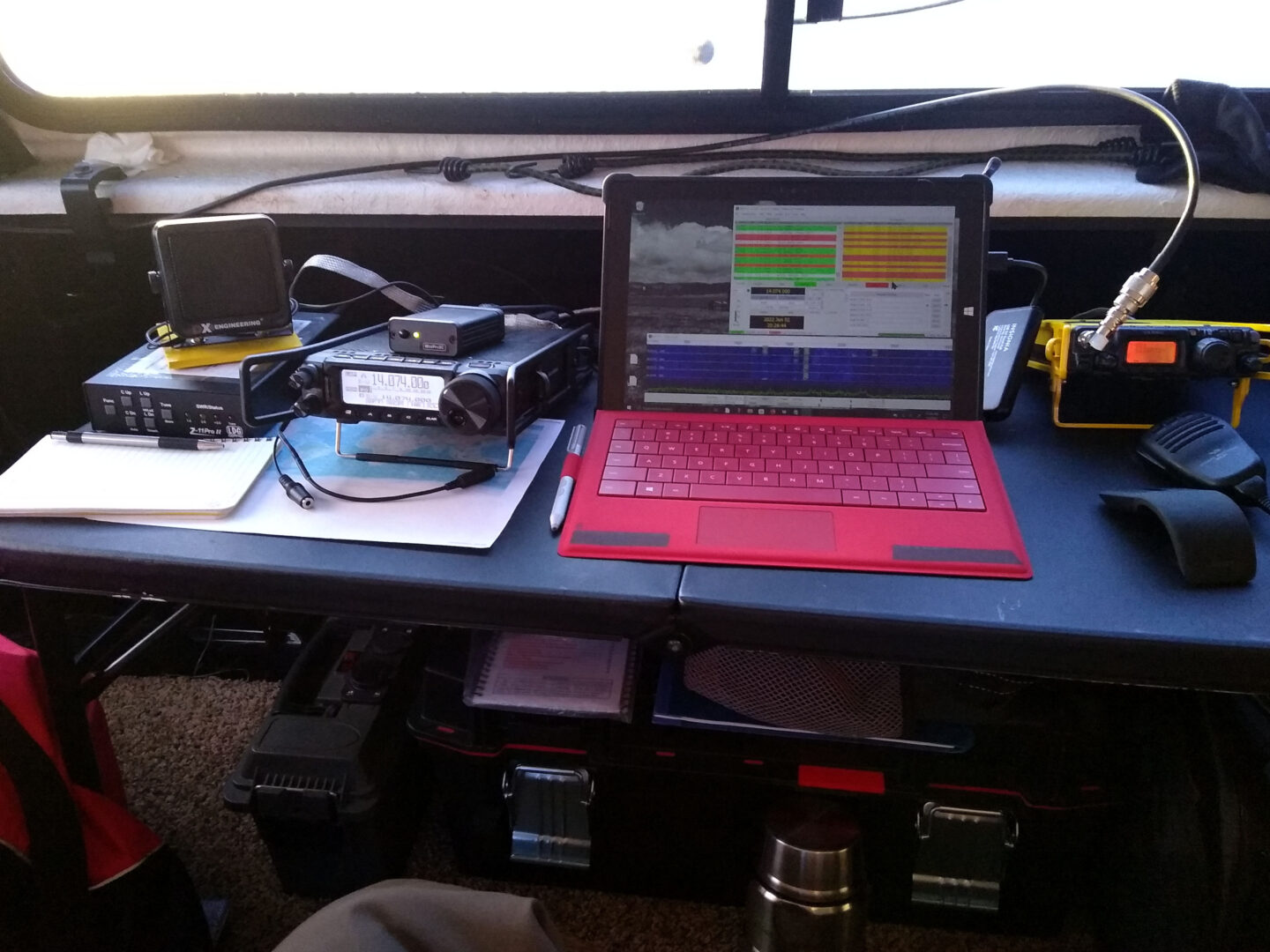
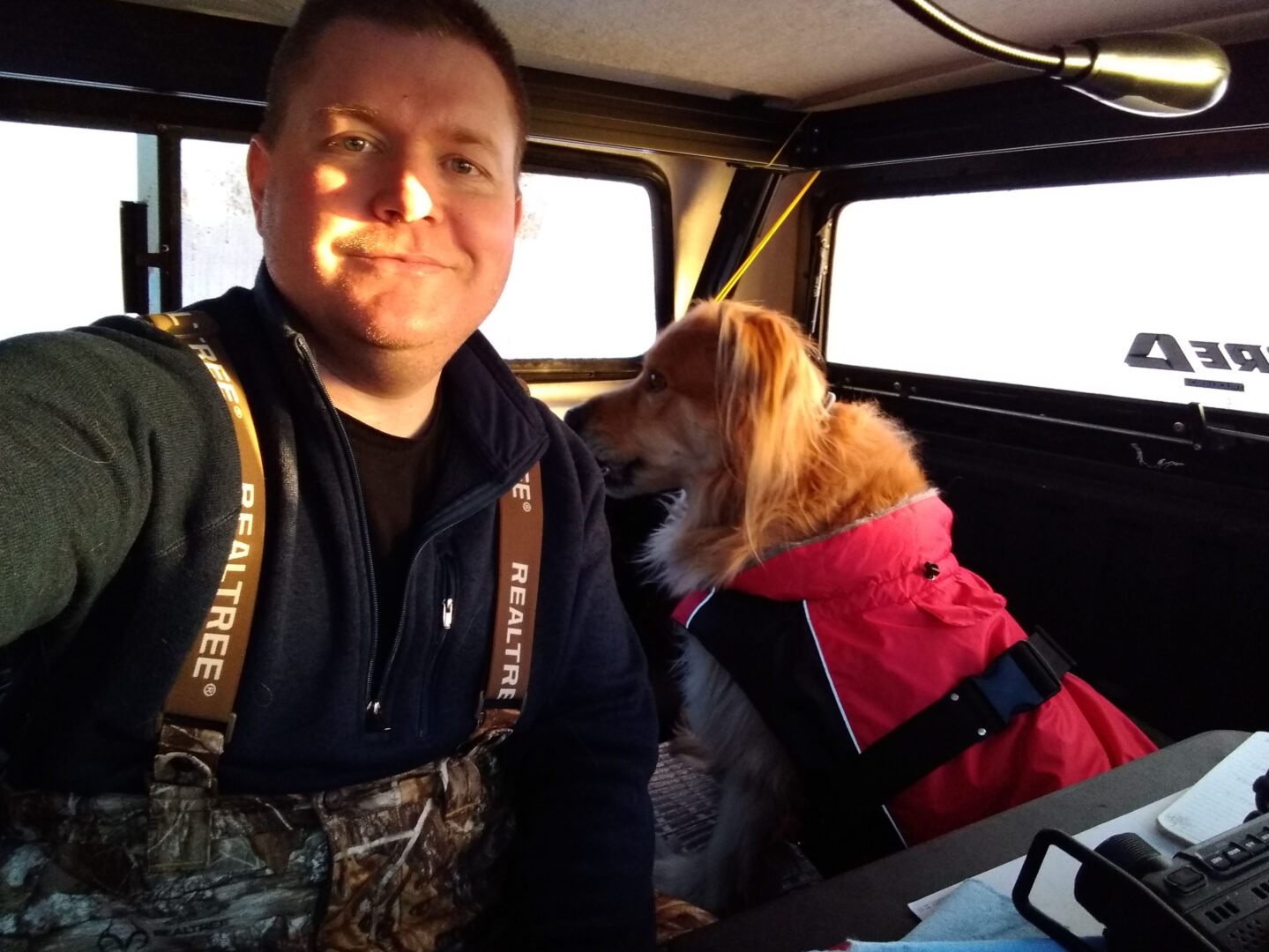
My trusty radio dog, Sledge (SK), accompanied me as usual.
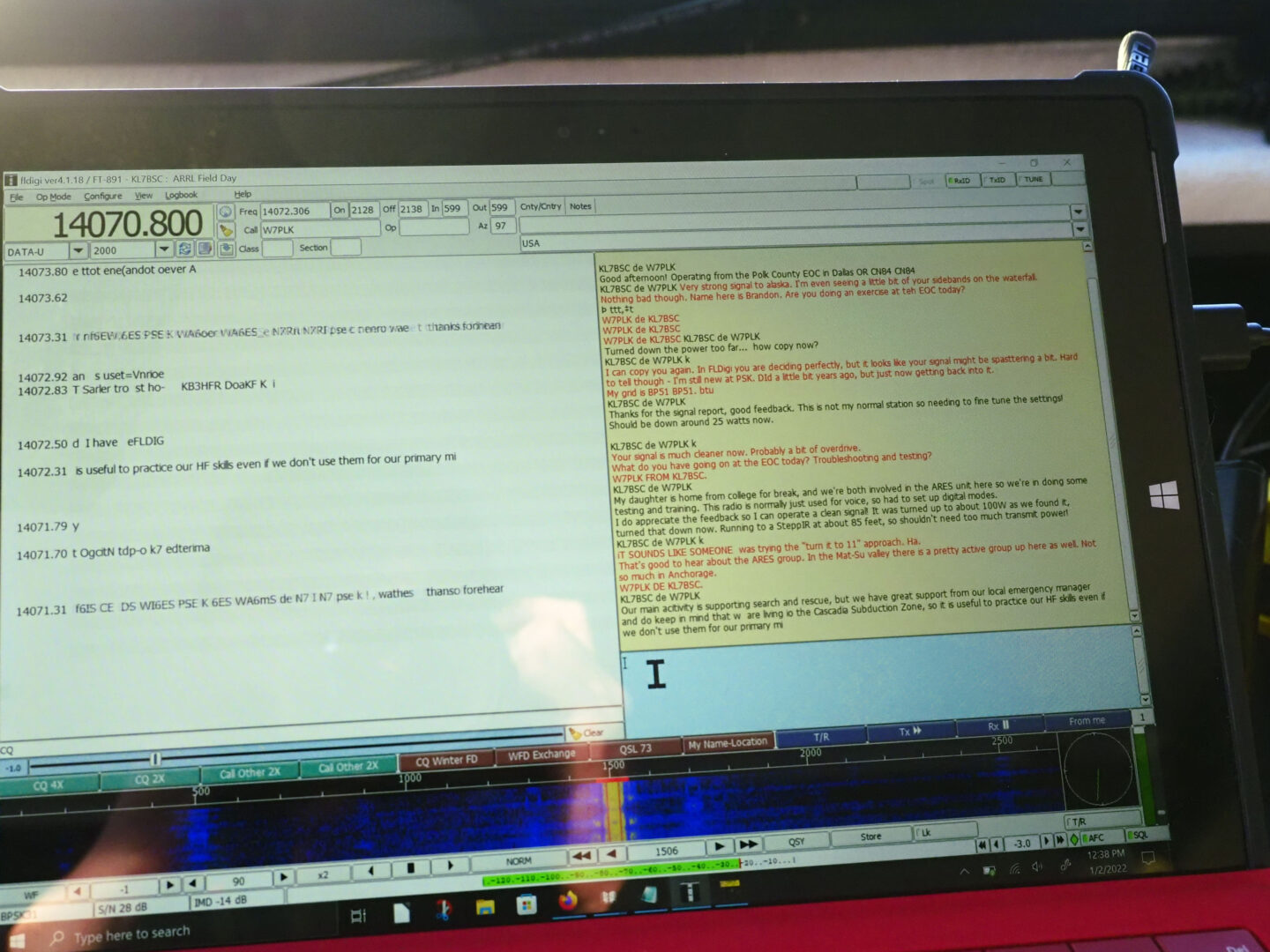
With battery power holding out and the activation assured I decided to switch things up a bit, and ran some PSK31 for a while. In all my time spent on FT8 over the last year I had nearly forgotten how nice it was to have a real QSO on digital modes.
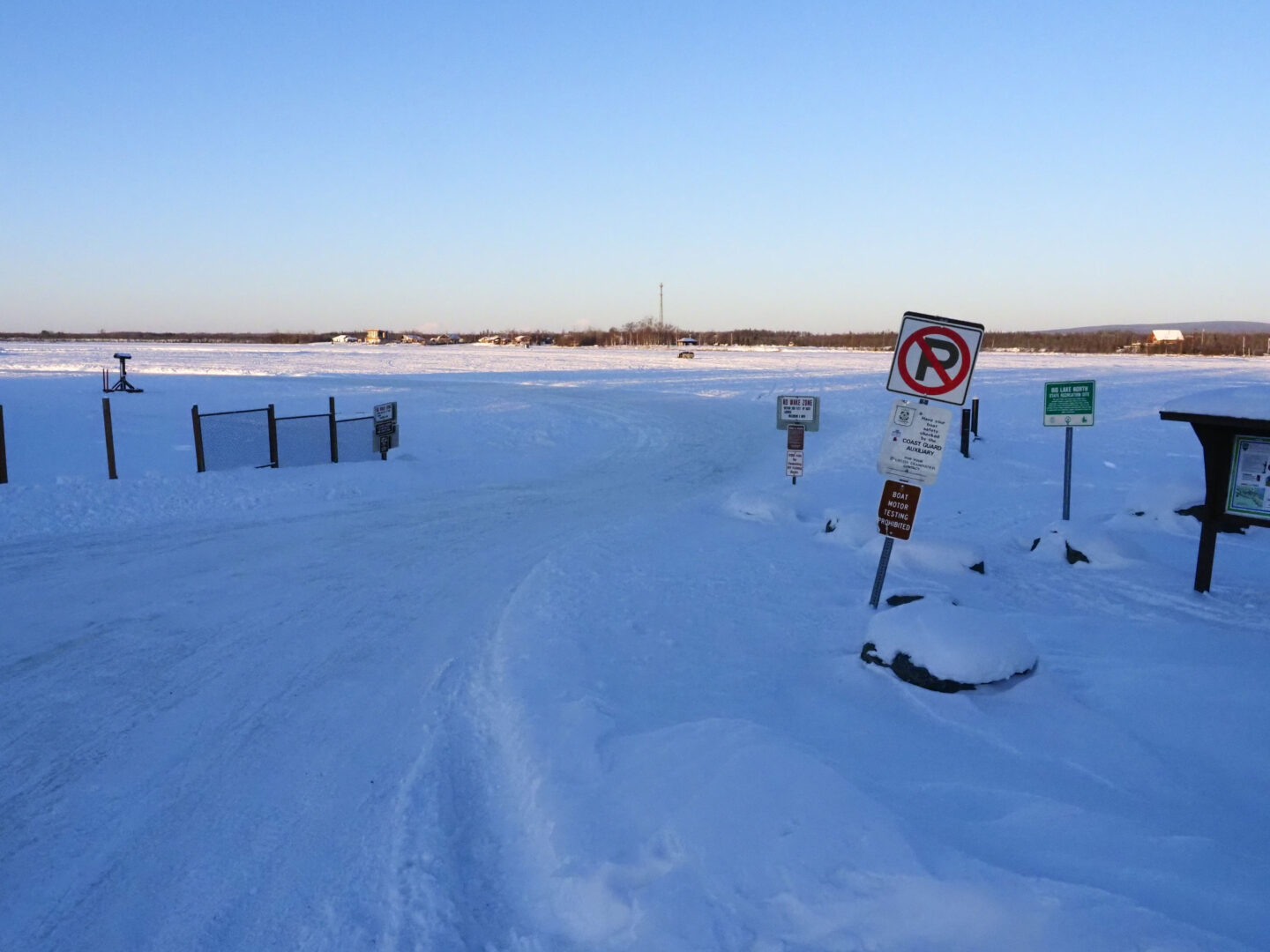
All that was left was to pack it up and go for a sunny ride on a mile long lake.
Life in Alaska . . . .
Updated 2022-11-28

